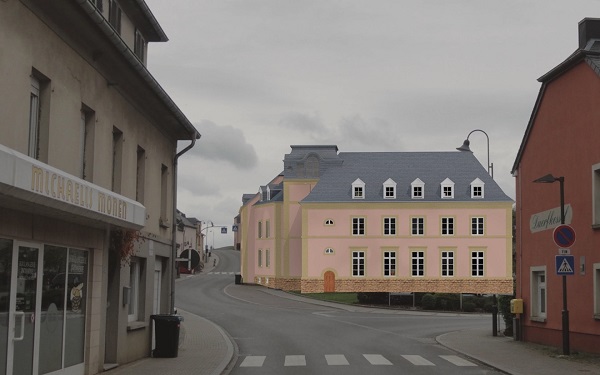
On Thursday evening the Municipality of Koerich approved plans for the future extension of their town hall.
The proposed extension is to be built in solid materials to the Class BB standard, as the municipality voluntarily chose to build to a higher standard than that is currently required for public buildings while avoiding the negative aspects of applied thermal insulations.
Colum Mulhern, an Irish architect who has spent all his professional life in Luxembourg, proposed a building destined to harmonise with the existing and to enhance the centre of the locality rather than the usual “shoebox“ alternative.
The municipality believed this to be the right solution as it is line with their ambitions for tourism in the area.
One member of the opposition regretted a “missed opportunity to build a good modern building“ but, as Mulhern pointed out, modern buildings become dated very quickly and we seek to demolish an replace them when they become out of fashion. With almost everything built today in Luxembourg the “opportunity to build a good modern building“ is taken systematically, with the results we all know, but in this case the municipality has taken a new approach.
Classical and traditional buildings do not aspire to be fashionable at any given point in time but are built to last, therefore forward-looking. “For a building to be truly sustainable it must remain desirable in the future“. Mulhern went on to say that after the initial sparkle that anything new has, we see that modern buildings become rapidly undesirable and lose their value, while there is always a market for traditional buildings.
During the sitting of the Conseil Communal, a member of the majority pointed-out that modern architecture has progressed very little since its origins almost 100 years ago. Indeed, we are surrounded with the proof that modernism has not lived-up to its early promises, however it is still portrayed by its protagonists as being avant-garde and revolutionary.
Colum Mulhern said that more and more architects refuse to condemn our centuries-old traditions to the past and have decided to freely employ the rich diversity of their local architectural languages in their work. This new way of thinking has become known as “New Urbanism“ and, although based on the theoretical work of a renowned Luxemburgish architect, it is largely rejected by the profession in Luxembourg.
“How can we hope to leave charming places for those who come after us to live in if we deliberately reject the architectural principles which we have inherited from hundreds of years of human intelligence?“
New Urbanists propose the use of traditional architectures not as a step back in the past but as a change of direction, focussing on what we would be doing if it were not for the modernist fracture that condemned our architectural principles to history.
“Since we have not been able to propose a viable alternative in 100 years of trying, I think it's time they recognised the modernist experiment has been a failure and that schools of architecture must begin to train young architects capable of designing good traditional buildings for the future.“
“New ideas take time to be accepted“ said Mulhern, “Luxembourg seems slower to accept this one than other developed countries“.
For further details, see www.colummulhern.lu








